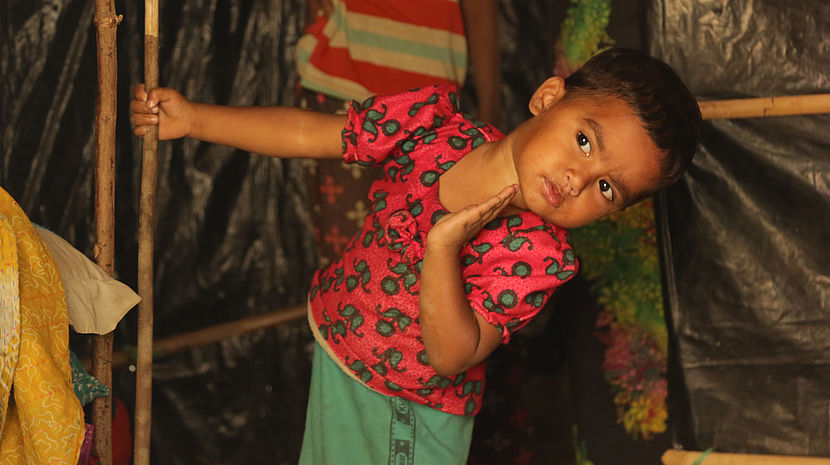12.05.2015 Awareness comes first and it is not about the fridge

Global Accessibility Awareness Day
Global Accessibility Awareness Day (GAAD) is celebrated this year on May 21. It was launched in 2012 by Joe Devon, a Los Angeles-based web developer, and Jennison Asuncion, an accessibility professional from Toronto. It started with a single blog post and rapidly became a worldwide event, attracting people who have an interest in raising awareness about digital accessibility and inclusion.
‘Relatively, there isn’t a lot of great information about accessibility out there’ said Joe Devon in his call to the community of web developers to make web sites accessible. His observation on the need for accessible digital environments mirrored the thoughts I had during the course of my own accessibility-related work with CBM in areas of transportation and the built environment: ‘the amount of readily available information is relatively poor when it comes to implementing universal design principles, particularly in low-income countries’.
My experience in Haiti
When reflecting on Global Accessibility Awareness Day in practice, I can’t help but recall a fridge in Haiti. In 2012, I attended an exhibition where architects from different countries displayed model houses that could be the basis for large-scale reconstruction. My objective was to see if accessibility had been taken into account in the designs.
Unsurprisingly, none of the houses were accessible except for one, which featured a ramp to the kitchen. I complimented the designers for considering persons with low mobility but asked why the kitchen would be the primary access for a person in a wheelchair.
“No, no,’ they replied, ‘the ramp is for the fridge, not for persons with disabilities.’
Everybody in the accessibility community has a similar anecdote to share. Aside from the laughs they might generate, stories like my fridge remind us of the obstacles that keep environments inaccessible to persons with disabilities. It also reminds us of the continuous advocacy work that needs to be done on a constant basis to make sure that accessibility does not slide off the agenda.
Why is accessibility an important issue?
Accessibility should never be a secondary priority or a convenient benefit. Accessibility should be seen as something that affects everyone, in every profession, and recruiting these people into the accessibility community through their vested interest would benefit the accessibility community with their passionate perspectives and innovative ideas because accessibility is innovative by definition.
Accessibility looks at creative solutions that answer the question of diversity in human nature. Neil Marcus defined that “Disability is not a brave struggle or ‘courage in the face of adversity.’ Disability is an art. It’s an ingenious way to live.” By designing for this diversity and this ingenuity, we can create things that are more functional and more user-friendly for everyone.
Link between accessibility and universal design
Accessibility is the essence of Universal Design: designing products and spaces so that they can be used by the widest range of people possible. We could play with words and argue between experts as to why and how accessibility is different from universal design. Semantically, accessibility refers to standards while universal design is a philosophy of design, but in the end, both aim to include everyone’s abilities and needs and bring back the users into the heart of the design.
Universal design is a process rather than a goal. The success of implementation will largely depend on user participation and the availability of technical support, which is the sum of capacity building, development of tools and methodology, gathering evidence (best practices) and knowledge sharing.
On that same analogy, accessibility is more than just a collection of norms. Norms and standards are important but do not guarantee successful implementation of accessibility in the field. To be successful, accessibility must engage with women, men, girls and boys with disabilities from the design phase to the end. It sounds obvious but too often, they have a limited voice in the design process.
What happens during emergencies?
The recent earthquake in Nepal reminded me of the importance of universal design as well as the right to safe egress. Egressibility means that, in case of an emergency, occupants have the ability to leave a building or safely reach an area of safety. Persons with disabilities face extra challenges to evacuate, which was highlighted at the April 2015 ‘Fire Safety for All’ Conference. This conference essentially reviewed worldwide fire safety practices and identified an urgent need to revise fire safety practices for persons with disability. The Dublin Declaration on ‘Fire Safety for All’ in Buildings was a product of this conference, highlighting that accessibility design criteria must be incorporated into all of the practical, day-to-day work of building designers and especially in the development of project-specific fire engineering design objectives.
Designing for all does not always involve complex manuals or extreme technologies. During our last Community Based Rehabilitation / Disability Inclusive Development meeting in Bangkok, a Disabled-Persons Group of people with learning disabilities (Change) demonstrated how to communicate emergency and evacuation procedures in a few words and pictures. They showed us how accessible information communicates the message to everyone, whether you have learning difficulties or speak a completely different language.
Once accessibility becomes part of your environmental awareness, it becomes obvious and natural to design for everyone. Accessibility is not a favour to a target group. It should remain one of the core values of the architect, the designer, and the developer who offer services and products to the general population. In the absence of appropriate or any legislative and regulatory frameworks in certain countries, advocacy and information sharing become key tools at international and local levels to encourage changes in perceptions and priorities. These tools can be used to convince government authorities and international agencies to place disability on the international agenda and in the budgets of humanitarian assistance.